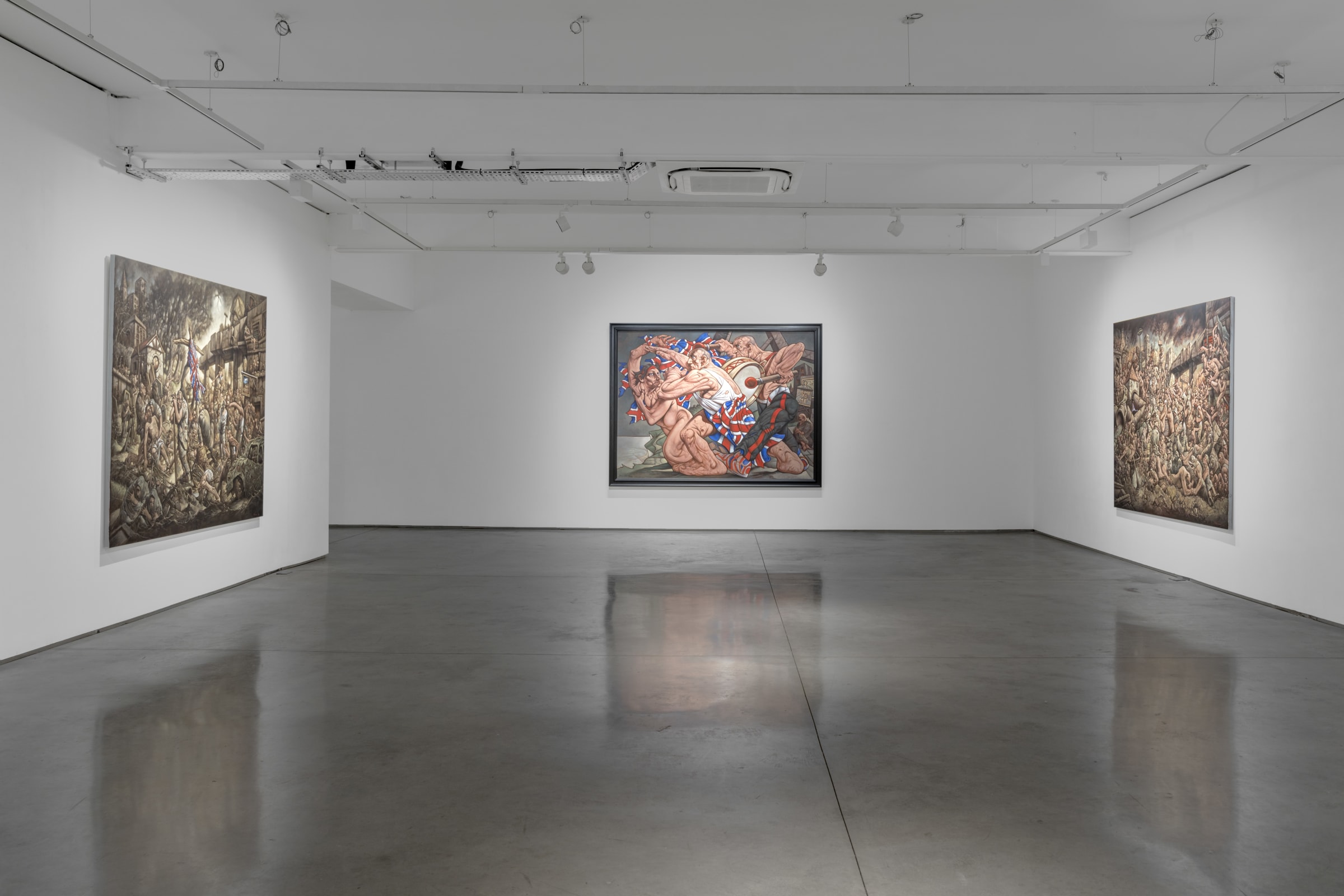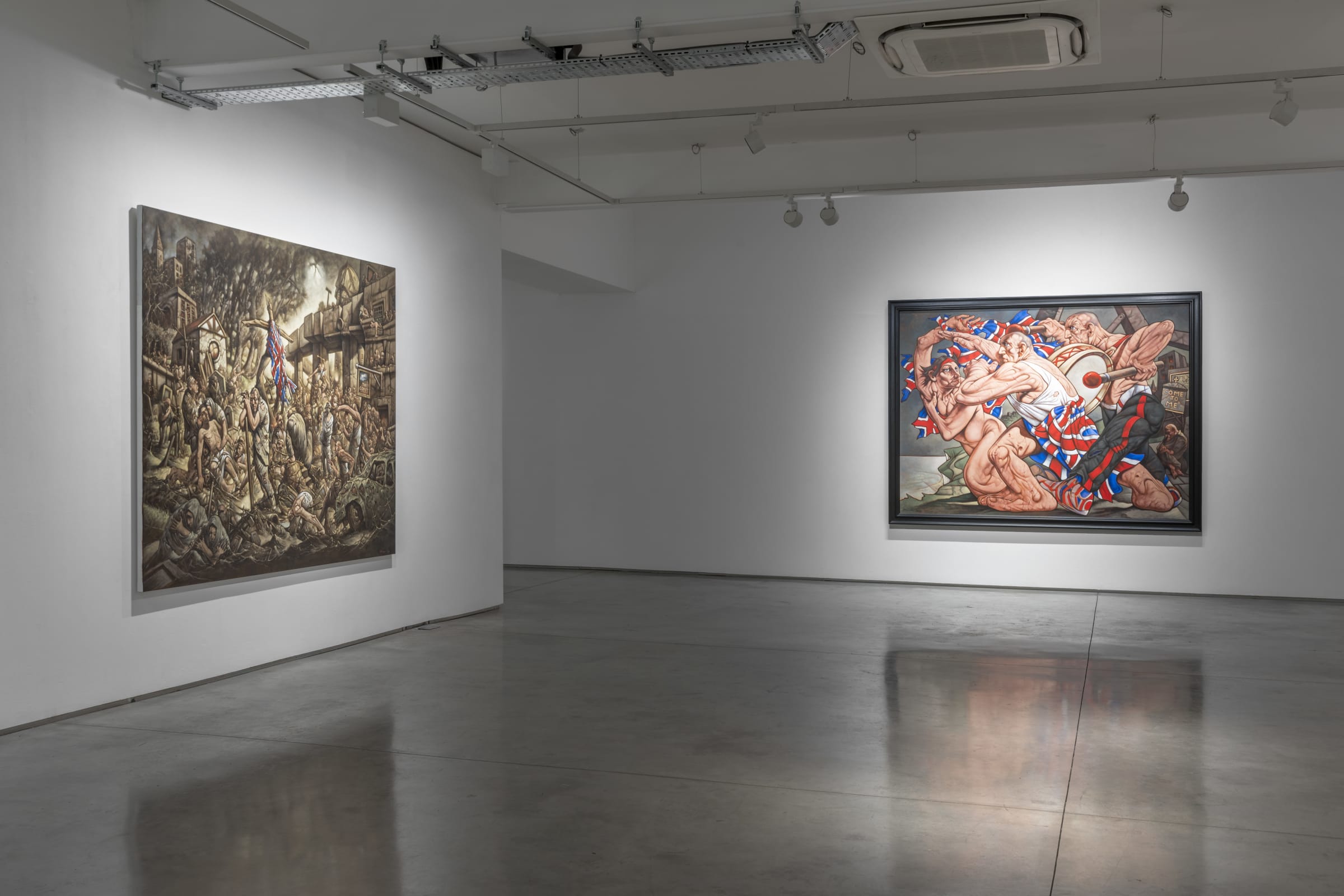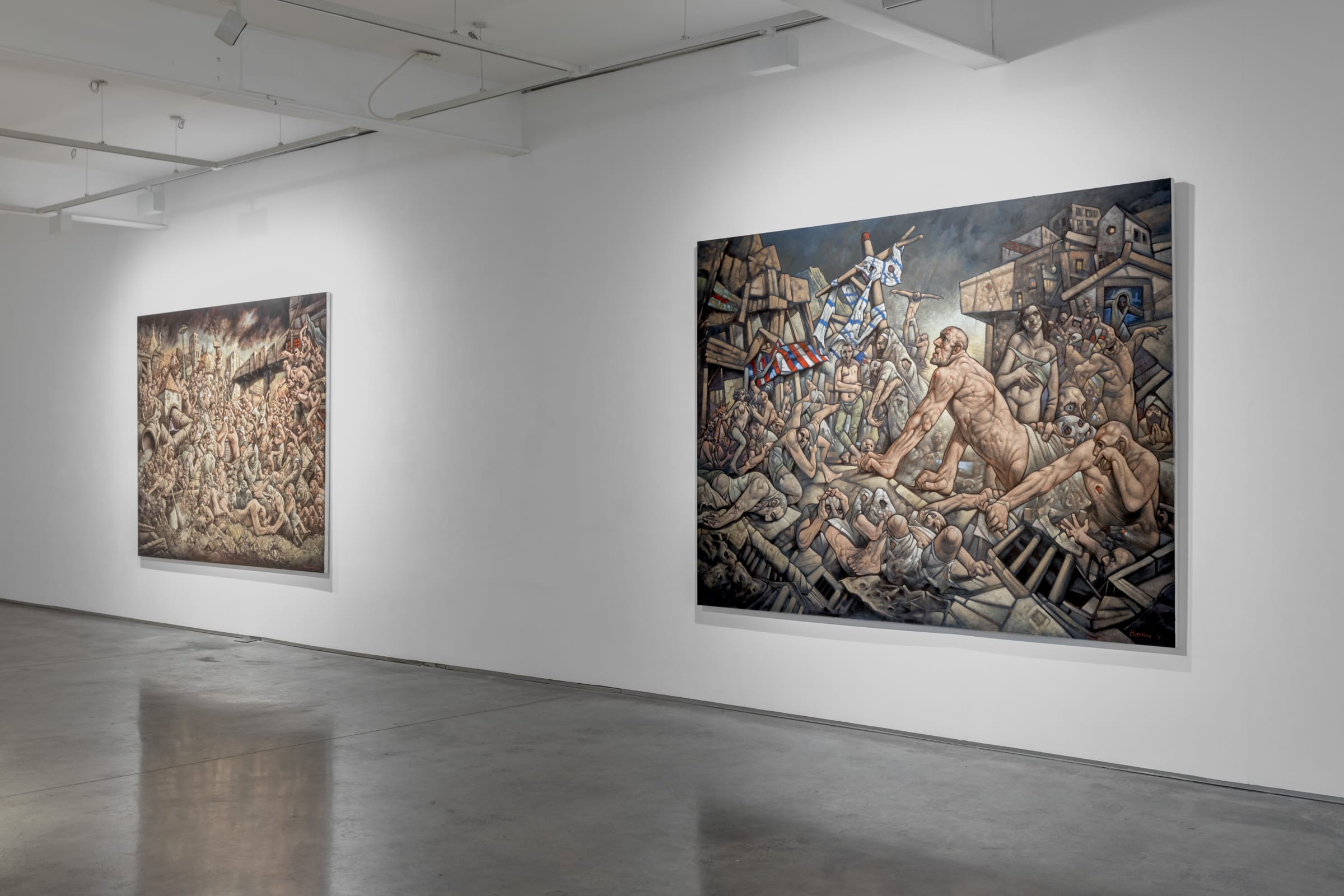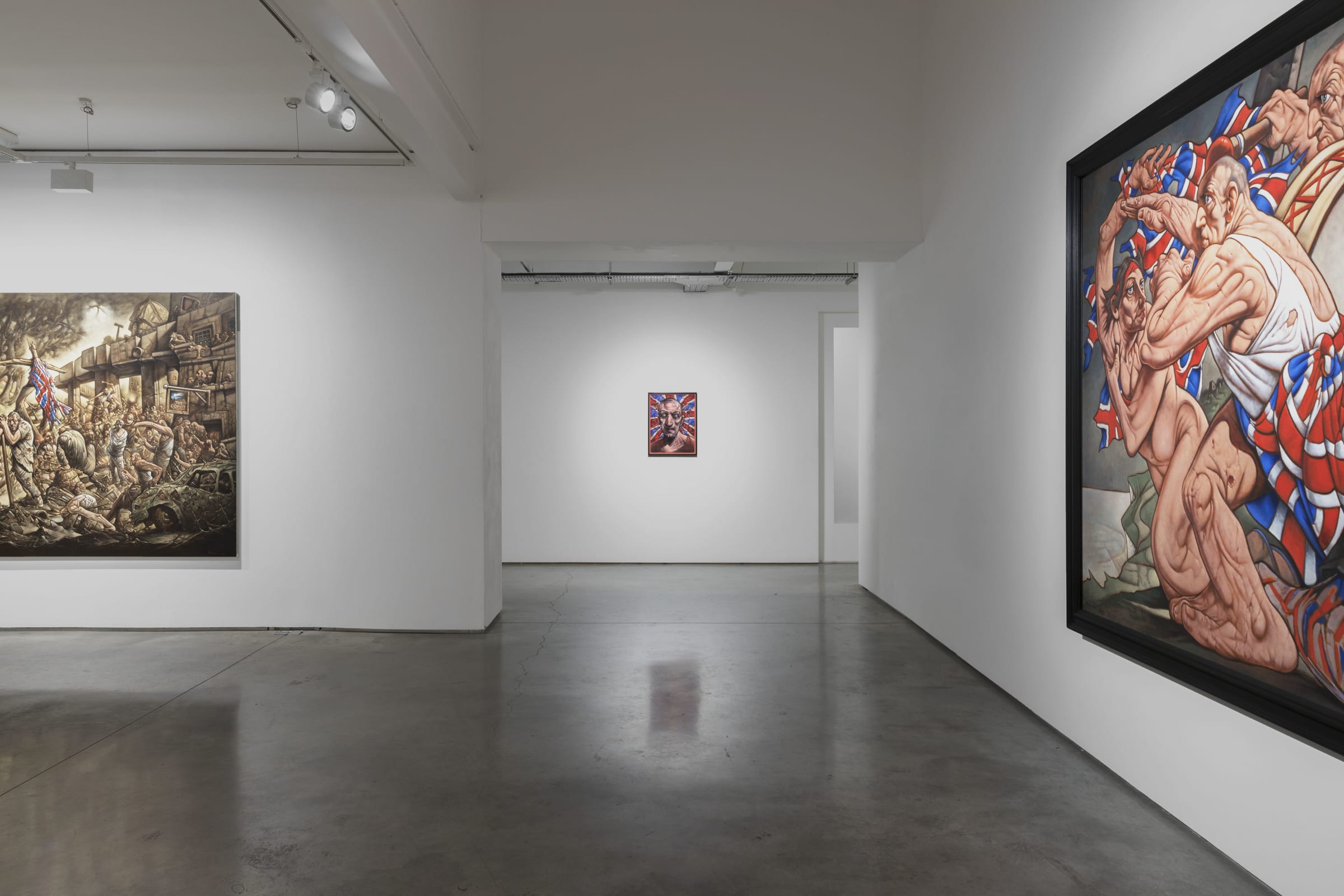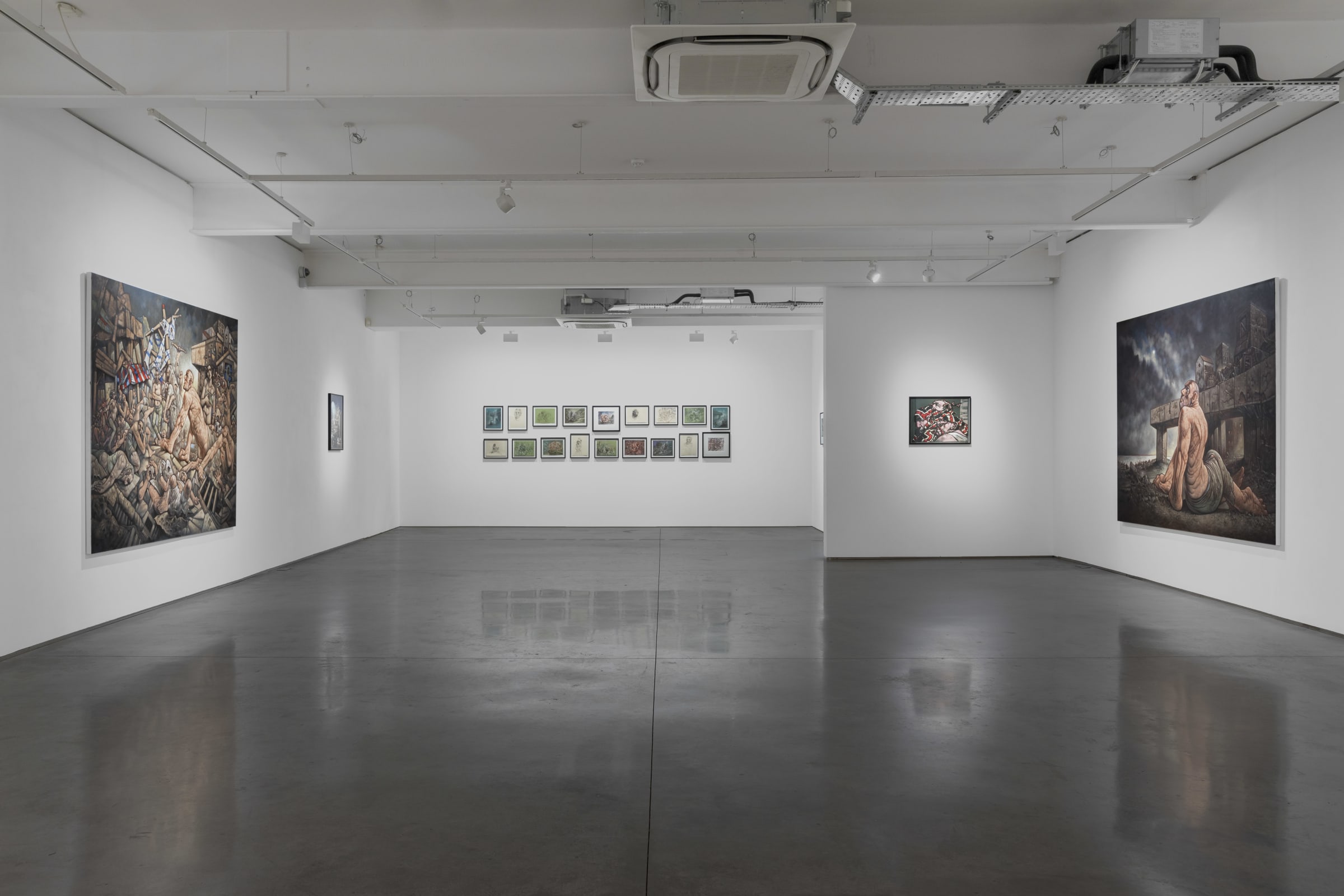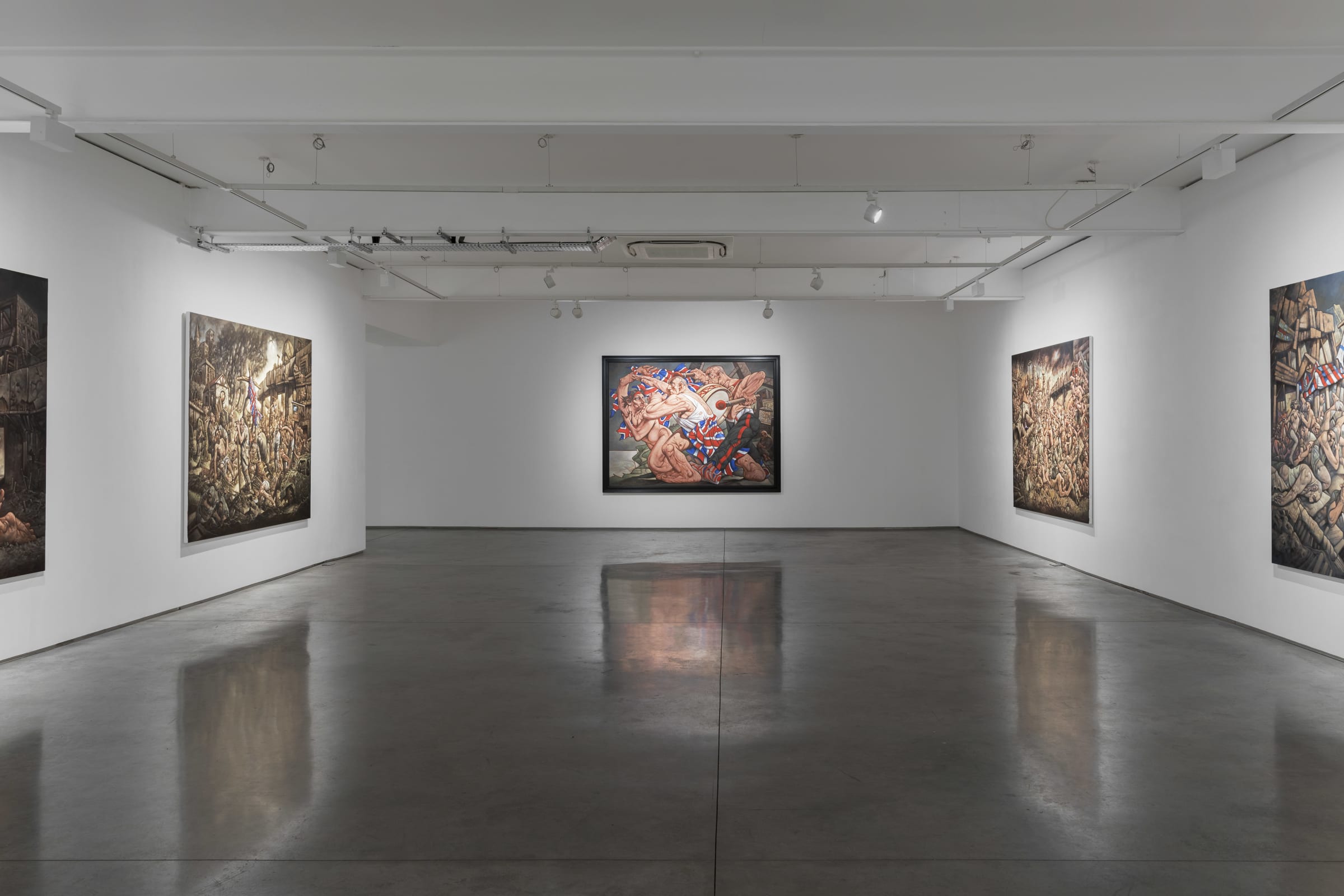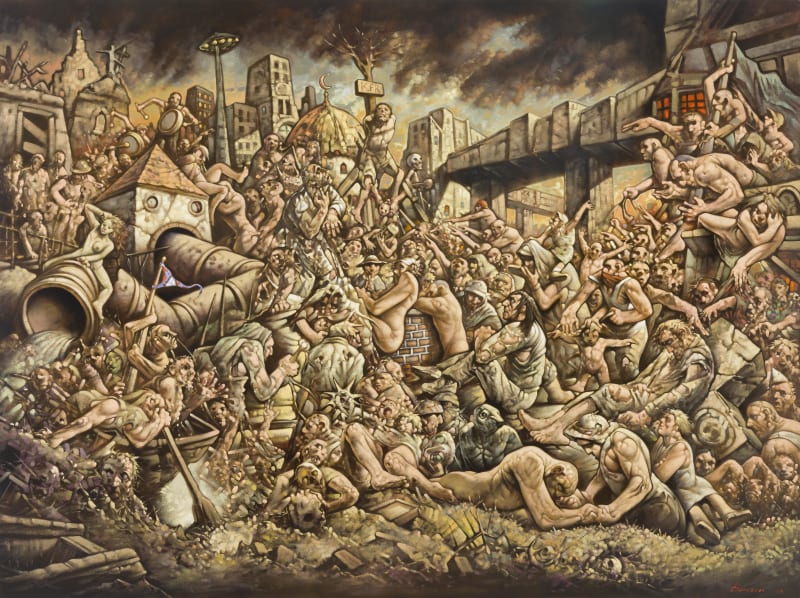Overview
Throughout his career, Howson has interwoven themes of conflict and destruction, human suffering and redemption in his imaginative portrayals of contemporary society.
Flowers Gallery is delighted to announce an exhibition of new work by Scottish artist Peter Howson, a focal member of the group of young artists to emerge from the Glasgow School of Art during the 1980s dubbed the New Glasgow Boys, and one of his generation’s leading figurative painters.
Throughout his career, Howson has interwoven themes of conflict and destruction, human suffering and redemption in his imaginative portrayals of contemporary society. Strongly influenced by witnessing the brutal and personally harrowing realities of combat as an official war artist commissioned by the Imperial War Museum during the Bosnian War in 1993, Howson’s paintings on contemporary social and political themes have since been founded on increasingly nightmarish visions of chaos and atrocity.
The title of the current exhibition Acta Est Fabula translates as ‘The play is over’ reported to be the Emperor Augustus’ last words, and commonly used to announce the ending of a dramatic performance in Ancient Roman theatre. The painting Siste Viator (translated as ‘Stop, Traveller’, a phrase often found inscribed on Roman tombs), is a monumental canvas depicting an apocalyptic mob-scene strewn with wounded bodies and debris, including a burnt-out motor vehicle. Central to the work is a vividly painted, tattered Union Jack flag, while a similarly brightly painted sign depicting a comet hanging from the wall of a tavern, appears to warn of further impending disaster.
Other large canvases include Seht Ich Mache Alles Neu (roughly translated as ‘Behold I Make All New’) and Entzauberung, (translated as ‘Disenchantment’). In both paintings, created in 2018, Howson explores his fears of contemporary radical right-wing politics.
Throughout his recent work, Howson creates disturbing scenes of degradation and violence to address the universal experience of human suffering. His emphatic distortions of form can be traced to the influence of the unsettling works of painters Otto Dix and Max Beckmann produced in the Weimar Republic between the wars. The brutish characters seen in this series, (based on Howson’s familiar motif of a giant or ‘colossus’), are drawn from his discomfort with machismo, relating in particular to his wartime experience.
Throughout his career, Howson has interwoven themes of conflict and destruction, human suffering and redemption in his imaginative portrayals of contemporary society.
